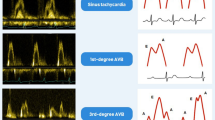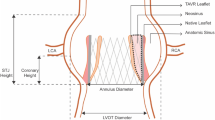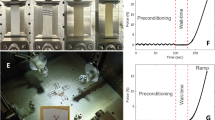Abstract
In order to aid the ongoing concern of limited organ availability for pediatric heart transplants, Penn State has continued development of a pulsatile Pediatric Ventricular Assist Device (PVAD). Initial studies of the PVAD observed an increase in thrombus formation due to differences in flow field physics when compared to adult sized devices, which included a higher degree of three-dimensionality. This unique flow field brings into question the use of 2D planar particle image velocimetry (PIV) as a flow visualization technique, however the small size and high curvature of the PVAD make other tools such as stereoscopic PIV impractical. In order to test the reliability of the 2D results, we perform a pseudo-3D PIV study using planes both parallel and normal to the diaphragm employing a mock circulatory loop containing a viscoelastic fluid that mimics 40% hematocrit blood. We find that while the third component of velocity is extremely helpful to a physical understanding of the flow, particularly of the diastolic jet and the development of a desired rotational pattern, the flow data taken parallel to the diaphragm is sufficient to describe the wall shear rates, a critical aspect to the study of thrombosis and design of such pumps.














Similar content being viewed by others
References
American Heart Association: Statistical Reference Book, Texas, 2005.
Bachmann, C., G. Hugo, G. Rosenberg, S. Deutsch, A. Fontaine, and J. M. Tarbell. Fluid dynamics of a pediatric ventricular assist device. Artif. Organs 25:362–372, 2000.
Baldwin, J. T., H. S. Borovetz, B. W. Duncan, M. J. Gartner, R. K. Jarvik, W. J. Weiss, and T. R. Hoke. The national heart, lung, and blood institute pediatric circulatory support program. Circulation 113:147–155, 2006.
Baldwin, J. T., S. Deutsch, D. B. Geselowitz, and J. M. Tarbell. LDA measurements of mean velocity and reynolds stress fields within an artificial heart ventricle. J. Biomech. Eng. 116:190–200, 1994.
Beghetti, M., and P. C. Rimensberger. Mechanical circulatory support in pediatric patients. Intensive Care Med. 26:350–352, 2000.
Black, M. D., J. G. Coles, W. G. Williams, I. M. Rebeyka, G. A. Trusler, D. Bohn, C. Gruenweld, and R. M. Freedom. Determinants of successes in pediatric cardiac patients undergoing extracorporeal membrane oxygenation. Ann. Thorac. Surg. 60:133–138, 1995.
Cochrane, T., C. J. Kenyon, P. V. Lawford, M. M. Black, J. B. Chambers, and D. C. Springings. Validation of the orifice formula for estimating effective heart valve opening area. Clin. Phys. Physiol. Meas. 12:21–37, 1990.
Cooper, B. T., B. N. Roszelle, T. Long, S. Deutsch, and K. B. Manning. The 12 cc Penn State pulsatile pediatric ventricular assist device: fluid dynamics associated with valve selection. J. Biomech. Eng. 130:041019-1–041019-13, 2008.
Daily, B. B., T. W. Pettitt, P. S. Salvatore, and W. S. Pierce. Pierce-Donachy pediatric VAD: progress in development. Ann. Thorac. Surg. 61:437–443, 1996.
Deutsch, S., J. M. Tarbell, K. B. Manning, G. Rosenberg, and A. Fontaine. Experimental fluid mechanics of pulsatile artificial blood pumps. Annu. Rev. Fluid Mech. 38:65–86, 2006.
Hart, D. P. Super-resolution PIV processing by recursive local-correlation. J. Vis. 10:187–194, 1999.
Health Resources and Services Administration, Healthcare Systems Bureau, Division of Transplantation. Annual Report of the U.S. Organ Procurement and Transplantation Network and the Scientific Registry of Transplant Recipients: Transplant Data 1996–2005. Rockville, MD, 2005.
Hochareon, P., K. B. Manning, A. A. Fontaine, J. M. Tarbell, and S. Deutsch. Correlation of in vivo clot deposition with the flow characteristics in the 50 cc Penn State artificial heart: a preliminary study. ASAIO J. 50:537–542, 2004.
Hochareon, P., K. B. Manning, A. A. Fontaine, J. M. Tarbell, and S. Deutsch. Wall shear-rate estimation within the 50 cc Penn State artificial heart using particle image velocimetry. J. Biomech. Eng. 126:430–437, 2004.
Hubbell, J. A., and L. V. McIntire. Visualization and analysis of mural thrombogenesis on collage, polyurethane and nylon. Biomaterials 7:354–363, 1986.
Karl, T. R., and B. Horton. Options for mechanical support in pediatric patients. In: Cardiac Assist Devices, edited by D. J. Goldstein and M. C. Oz. New York: Futurea Publishing Co, 2005, pp. 37–62.
Kreider, J. W., K. B. Manning, L. A. Oley, A. A. Fontaine, and S. Deutsch. The 50 cc Penn State left ventricular assist device: a parametric study of valve orientation flow dynamics. ASAIO J. 52:123–131, 2006.
Lawson, N. J., and J. Wu. Three-dimensional particle image velocimetry: error analysis of stereoscopic techniques. Meas. Sci. Technol. 8:894–900, 1997.
Long, J. A., A. Undar, K. B. Manning, and S. Deutsch. Viscoelasticity of pediatric blood and its implications for the testing of a pulsatile pediatric blood pump. ASAIO J. 51:563–566, 2005.
Lukic, B., C. M. Zapanta, K. A. Griffith, and W. J. Weiss. Effect of the diastolic and systolic duration on valve cavitation in a pediatric pulsatile ventricular assist device. ASAIO J. 51:546–550, 2005.
Manning, K. B., B. D. Wivholm, N. Yang, A. A. Fontaine, and S. Deutsch. Flow behavior within the Penn State 12 cc pulsatile pediatric ventricular assist device: an experimental study of the initial design. Artif. Organs 32:442–452, 2008.
Prasad, A. K., and K. Jensen. Scheimpflug stereocamera for particle image velocimetry in liquid flows. Appl. Opt. 34:7092–7099, 1995.
Rosenberg, G., W. M. Phillips, D. Landis, and W. S. Pierce. Design and evaluation of the Pennsylvania State University mock circulatory system. ASAIO J. 4:41–49, 1981.
Roszelle, B. N., B. T. Cooper, T. C. Long, S. Deutsch, and K. B. Manning. Penn state 12 cc pulsatile pediatric ventricular assist device: flow field observations at a reduced beat rate with application to weaning. ASAIO J. 54:325–331, 2008.
Acknowledgment
Supported by NIH NHLBI Grant HV 48191.
Author information
Authors and Affiliations
Corresponding author
Rights and permissions
About this article
Cite this article
Roszelle, B.N., Deutsch, S. & Manning, K.B. Flow Visualization of Three-Dimensionality Inside the 12 cc Penn State Pulsatile Pediatric Ventricular Assist Device. Ann Biomed Eng 38, 439–455 (2010). https://doi.org/10.1007/s10439-009-9842-7
Received:
Accepted:
Published:
Issue Date:
DOI: https://doi.org/10.1007/s10439-009-9842-7




